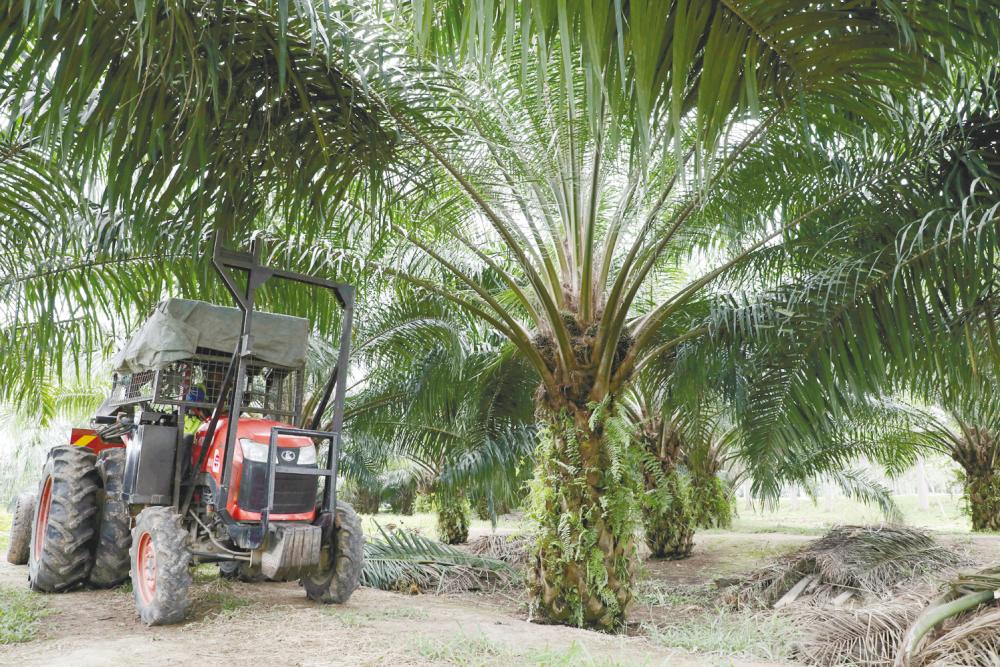PETALING JAYA: Palm oil prices are expected to moderate to an average of RM3,050 a tonne this year, compared with an average of RM2,580 in 2020 and the current levels of RM3,527, according to a forecast by Fitch Solutions.
It believes prices have peaked in early January – barring a further rally in the soybean complex – on the back of the impressive run-up in the second half of 2020 that sent palm oil prices to their highest levels since 2011.
For the near term, the Fitch Ratings research unit expects price easing to continue as demand from China and India drops because of uncompetitive prices, but prices are likely to remain at elevated levels for first-half 2021 (1H21) compared with historical prices.
“The market is tight after a number of concomitant factors have reduced significantly the supply outlook, creating a perfect storm for palm oil after a year of lacklustre prices,” Fitch Solutions said in a report.
Among these factors are: La Niña, which is causing a drought in Latin America and subsequently a rally in prices of soybean, an alternative to palm oil; record low palm oil stocks in Malaysia, compounded by higher than usual rainfall in Southeast Asia, leading to some harvest disruption; and pent-up oil demand from China and India from Covid-19 in 1H21.
Fitch Solutions sees prices easing from current levels as heavier rainfall leads to a higher yield in the second half of the year as well as lower soybean prices due to a recovery in production.
“We note that it will take time to rebuild stocks in Malaysia given that they come from multi-year low levels, which will keep palm oil prices supported over the year,” it said.
Overall, 2020/21 global production is projected to grow at a moderate 4.4% year on year (yoy), as a robust rebound of 5% yoy is expected for 2021 after a 2.1% decline recorded fin the previous year.
Fitch Solutions noted economic activity will be stronger in 2021, along with restaurant sales and fuel use, which will support palm oil food use and biodiesel use.
It also noted that biodiesel demand in Malaysia and Indonesia will be particular robust this year, as it had stagnated yoy in 2020 despite an increase in blending rate in Indonesia.
It maintains that prices will average lower in 2022 but as supply eases it is has revised its forecast to RM2,600 a tonne from RM2,500 a tonne.
“We expect palm oil production growth to accelerate in 2021/22 (starting in October 2021), amid higher yields and higher fertiliser application, helped by elevated prices.”
In the longer term, the research unit sees prices remaining below 2021 levels out to 2025, which is still higher than 2015-2019 averages, as palm oil production will slow down significantly in the coming years and the expected demand growth to underwhelm in China, India and the European Union.
It also expressed uncertainty in Indonesia’s biodiesel blending steady increase. Although it has been relatively successful with the biodiesel programme at a rapid blending mandate, it remains to be seen whether the authorities will boost beyond the B40 goal for 2021.
“We note that large sources of growth for consumption are concentrated in a very limited number of markets, which makes the demand story vulnerable to change should the biodiesel or Indian oilseed market context turn. As a result, our base case for now is for prices to remain relatively contained on a five-year horizon.” said Fitch Solutions.
This outlook is in line with OCBC Treasury Research’s report on the start of a commodity super cycle, which lasts for five to seven years.
It said the cyclical nature of commodities is best explained by the Cobweb Theorem, in which markets eventually head towards price equilibrium but the route to a steady state is not immediate.
As producers require lead time to increase supply in response to a pickup in demand, the dislocation in equilibrium drives prices higher, creating a feedback loop to buyers in stockpiling inventories for fear of further rising prices.
“Eventually, this results in overzealous producers supplying more than demand, driving down prices. This to-and-fro dynamic continues in a reduced magnitude until equilibrium is reached,” the research house explained.
Among the support factors for commodities to continue rallying is a reluctance to cease support by policymakers even in a recovering economy, it said.
OCBC pointed out that the authorities have been quick to act with unprecedented fiscal and monetary stimulus in the wake of the 2020 pandemic, but are likely to sit on their hands even as economic recovery is under way.
In addition, the rally is expected to be supported under investment which leads to supply issues as companies focus on survival in 2020, directing cash flows to opex rather than capex; China’s continued buying and a “global green wave” with Joe Biden’s presidency, as the return of a Democrat in the White House is set to increase demand for raw commodities in the short term.









